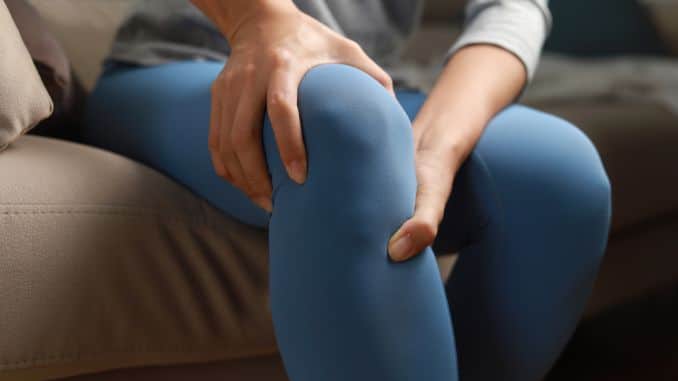A Practical Guide to Managing Primary and Secondary Orthostatic Tremor Through Targeted Movement
Orthostatic Tremor (OT), also known as shaky legs syndrome [2], is a rare condition that causes rapid, rhythmic, and involuntary muscle contractions in the legs when standing still. This leads to unsteadiness and balance issues that can severely affect a person’s everyday activities, eventually contributing to social isolation, stress, and anxiety.
Fortunately, a consistent orthostatic tremor exercise routine can be beneficial in helping individuals cope with symptoms, improve leg muscle strength, and significantly support mobility.
These low-impact exercises are designed to target leg strength, flexibility, and also balance. They are particularly useful for those experiencing primary or secondary orthostatic tremor.
1. Ankle Circles
Goal: Improve ankle flexibility and circulation.
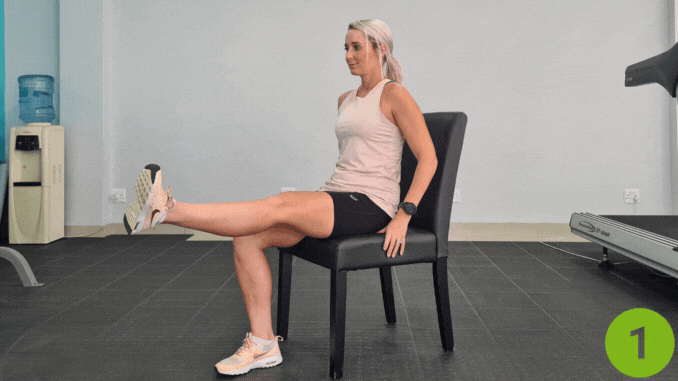
- Sit on a chair with both feet flat on the floor.
- Extend your left leg and rotate the foot in a circle 20 times clockwise, then 20 times counter clockwise.
- Switch legs then repeat.
2. Hip Marching
Goal: Strengthen the hip flexors and also thighs.
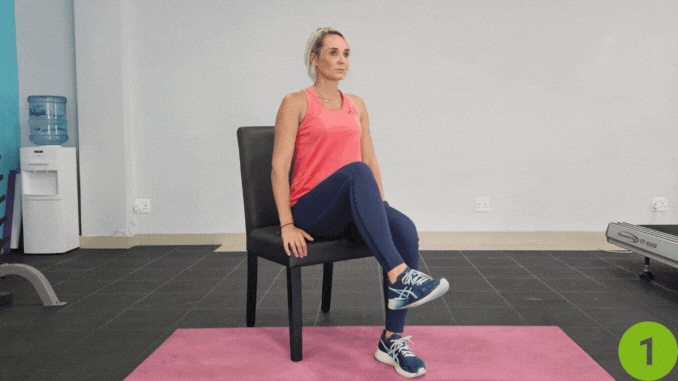
- Sit upright on a chair with both feet on the floor.
- Lift your right knee as high as comfortable, then lower it.
- Alternate legs for a total of 10 lifts each.
3. Knee Extensions
Goal: Improve knee strength and range of motion.
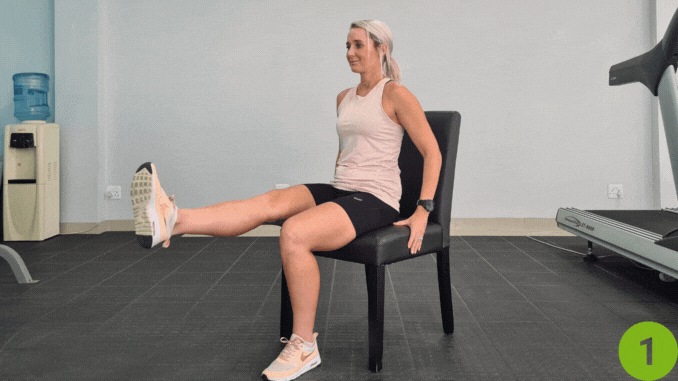
- Sit on a chair.
- Extend your right knee and then hold for a few seconds.
- Switch to the left knee afterwards.
- Repeat 10 times per leg.
4. Calf Raises
Goal: Strengthen the calves and also promote blood flow.

- Stand behind a chair and use for balance.
- Raise your heels as high as possible, then lower.
- Repeat 10 times.
5. Standing Knee Flexion
Goal: Build hamstring strength and improve standing balance.
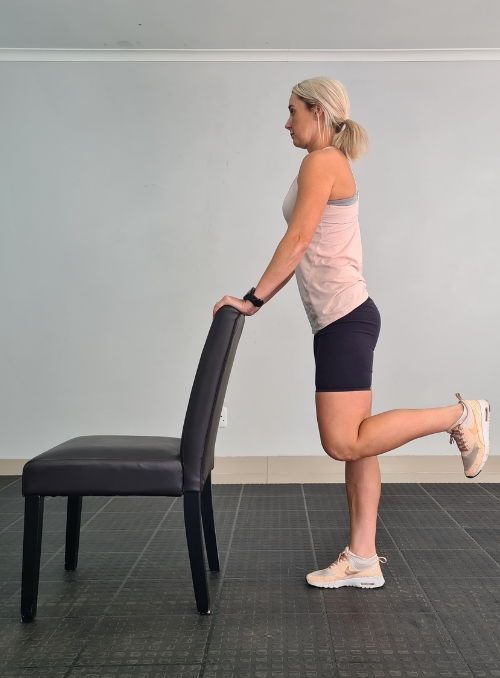
- Stand behind a chair and place your hands at the back of the chair,
- Bend one knee back as far as possible.
- Lower and repeat 10 times, then switch legs.
6. Side Hip Raise
Goal: strengthen hip abductors for better lateral movement.
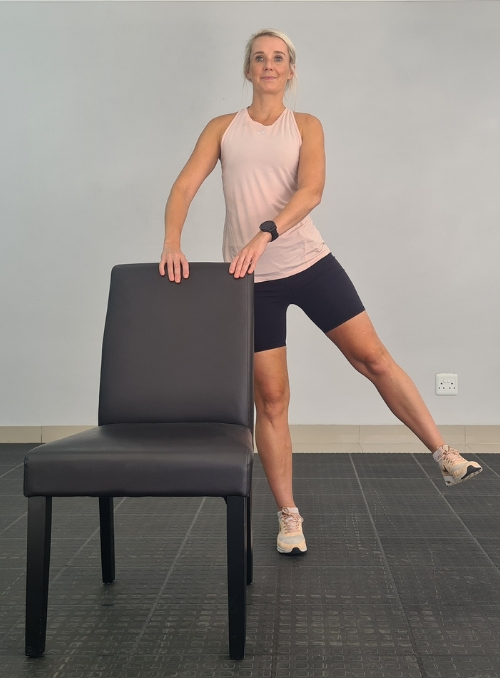
- Stand behind a chair and place your hands at the back of the chair.
- Lift one leg to the side, then return, and repeat 10 times.
- Switch to the other leg.
7. Sit to Stand
Goal: Strengthen hips and improve standing function.

- Sit on a chair with both feet flat on the floor.
- Extend both arms forward, then push from your to rise to a standing position.
- Hold for a couple of seconds then return to starting position.
- Repeat 10 times.
Bonus Activities:
- Hydrotherapy: Exercise in water reduces joint loading through buoyancy and improves movement.
- Tai Chi: Improves balance, flexibility, and mental focus—an excellent option for those with neuropsychiatric symptoms.
What Defines Orthostatic Tremors?
According to Dr. Anhar Hassan MB, BCh, FAAN (Movement Disorder Specialist, Mayo Clinic, Rochester, MN): “Orthostatic tremor is characterized by a high-frequency tremor of around 13–20 Hz that occurs when bearing weight or standing … As the disease progresses, symptoms begin almost immediately upon standing, and patients need to sit, lean, or walk to alleviate them.”
She also notes that deep-brain stimulation has shown modest benefit in extending standing time and reducing tremor severity in severe cases.
There are two main classifications:
- Primary Orthostatic Tremor [3]: Occurs without any other underlying neurological conditions.
- Secondary Orthostatic Tremor: Associated with other neurological diseases such as Parkinson’s, cerebellar pathology, or spinal cord injury.
These tremors are believed to result from abnormal network connectivity in the brain, involving areas like the cerebellum, for example. Studies using resting-state functional MRI have supported these findings additionally.
What Are the Causes of Leg Tremors?
Though OT is considered a rare condition, the underlying cause remains largely idiopathic (unknown). However, research suggests several potential contributors:
- Neurological Conditions: Parkinson’s disease, multiple sclerosis, and cerebellar disorders.
- Cognitive and Neuropsychiatric Features: Conditions like anxiety, depression, and other mental health issues may exacerbate the perception or frequency of tremors
- Age & Medical History: Most cases appear in individuals over 50, often with complex medical histories.
Diagnosis
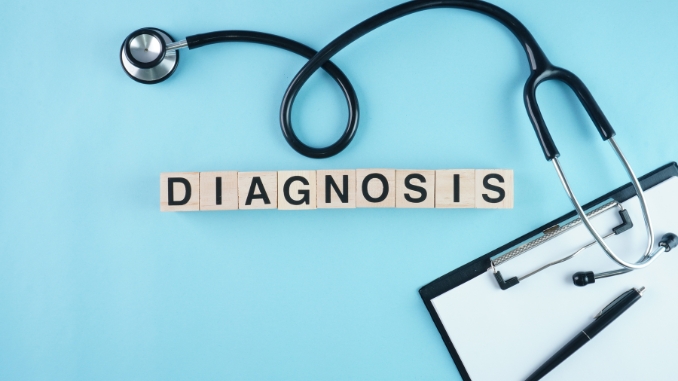
Diagnosis requires a combination of clinical observation and imaging.One primary tool is:
Surface Electromyography (sEMG)
A non-invasive test that measures the electrical activity of muscles during rest and motion. It helps analyze:
- Tremor Frequency
- Amplitude
- Muscle Coordination
The results can confirm whether the tremor fits the OT pattern or aligns with other types of movement disorder.
Treatment & Coping Skills
There is currently no known cure for orthostatic tremor, but a combination of physical therapy, medication, lifestyle changes, and coping skills can help patients manage their condition.
Medications:
- Clonazepam (Klonopin): Most commonly prescribed; may cause fatigue and then sleep disturbances.
- Gabapentin, Primidone, Valproic Acid, Levodopa, and others may also offer relief.
Supportive Strategies:
- Use mobility aids to reduce falls also.
- Join OT support groups to reduce social isolation.
- Engage in low-impact exercise to strengthen muscles and also boost confidence
- Regularly consult with specialists to stay updated on treatment findings, also for any new consensus statements.
Takeaway
Orthostatic tremor [1] does not necessarily worsen over time, but untreated symptoms can become severe, affecting quality of life. Early diagnosis and intervention—especially through consistent orthostatic tremor exercise routines—can make a meaningful difference.
Understanding your symptoms, maintaining balance, and basically adopting a personalized plan of exercise and care offer the best chance to cope with this condition effectively.
Check out the Top 10 Morning Movements To Loosen Up Your Joints! Instantly loosen up tight joints and ease sore muscles… So you can wake up and get moving, pain free!
FAQ’s
What is orthostatic tremor exercise, and how does it help?
Orthostatic tremor exercise refers to targeted leg and balance routines—like ankle circles, calf raises, hip marching, and Tai Chi—that help strengthen the leg muscles, improve balance in the standing position, and reduce the frequency and severity of tremors. These routines support physical therapy goals and help patients cope with the rare condition unquestionably.
What defines orthostatic tremor and distinguishes primary from secondary?
It’s defined by a high-frequency (13-20 Hz) synchronous tremor of leg muscles when standing, with symptoms vanishing during walking or sitting.
Primary orthostatic tremor is idiopathic, with no associated neurological conditions.
Secondary orthostatic tremor coexists with other neurological disorders identically like Parkinson’s, multiple sclerosis, or cerebellar pathology .
What are the main causes of leg tremors in orthostatic tremor?
The exact cause remains unknown. Nonetheless, researchers explore links to abnormal network connectivity in the cerebellum and brainstem, and possible genetic or mitochondrial factors. Some patients exhibit cognitive and neuropsychiatric features, especially in secondary cases .
Tremor and Other Hyperkinetic Movements

